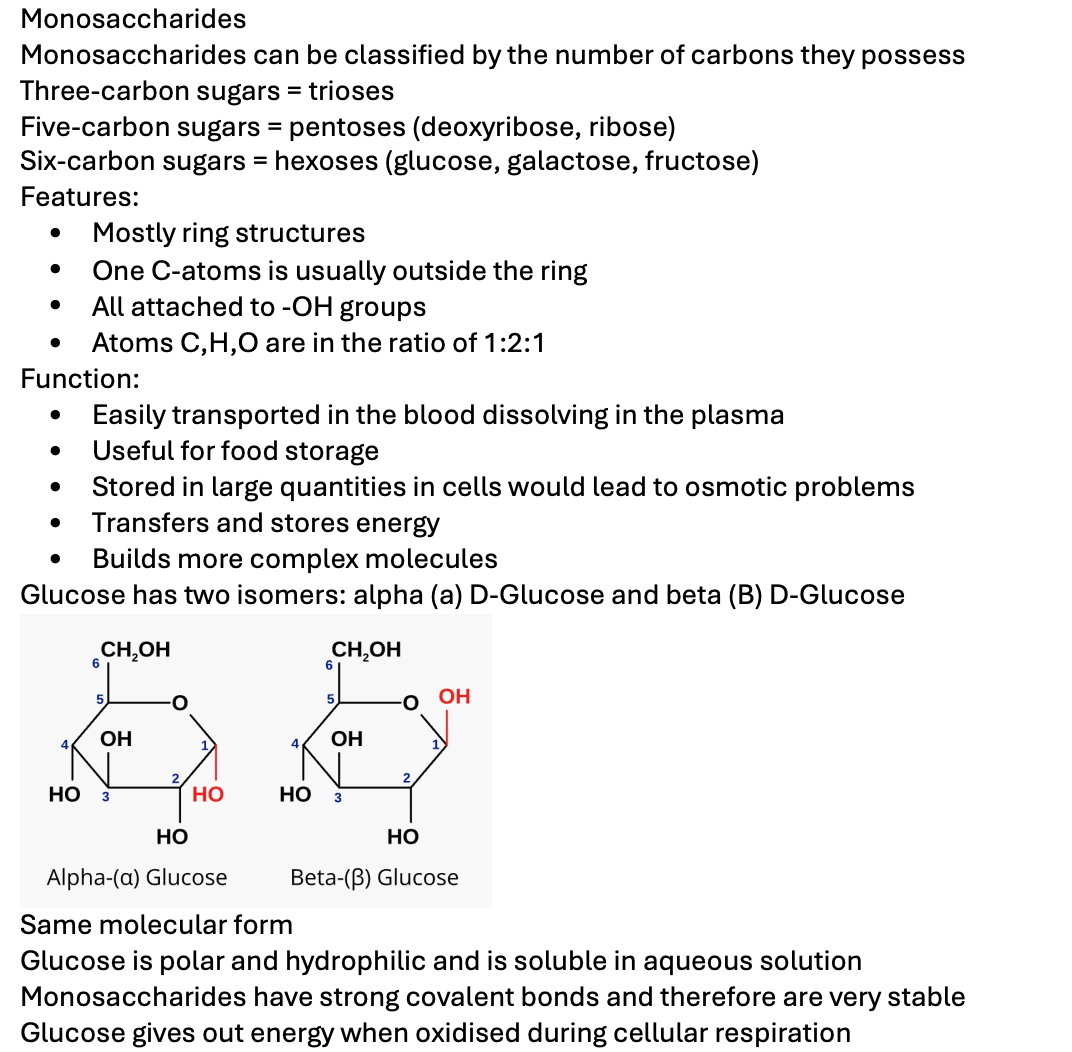Monosaccharides
Monosaccharides are monomers
Monosaccharides can be classified by the number of carbons they possess
Three-carbon sugars = trioses
Five-carbon sugars = pentoses (deoxyribose, ribose)
Six-carbon sugars = hexoses (glucose, galactose, fructose)
Features:
Mostly ring structures
One C-atoms is usually outside the ring
All attached to -OH groups
Atoms C,H,O are in the ratio of 1:2:1
Function:
Easily transported in the blood dissolving in the plasma
Useful for food storage
Stored in large quantities in cells would lead to osmotic problems
Transfers and stores energy
Builds more complex molecules
Glucose has two isomers: alpha (a) D-Glucose and beta (B) D-Glucose
Same molecular form
Glucose is polar and hydrophilic and is soluble in aqueous solution
Monosaccharides have strong covalent bonds and therefore are very stable
Glucose gives out energy when oxidised during cellular respiration
